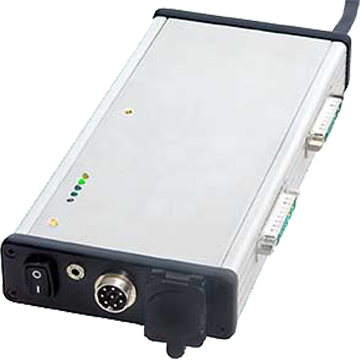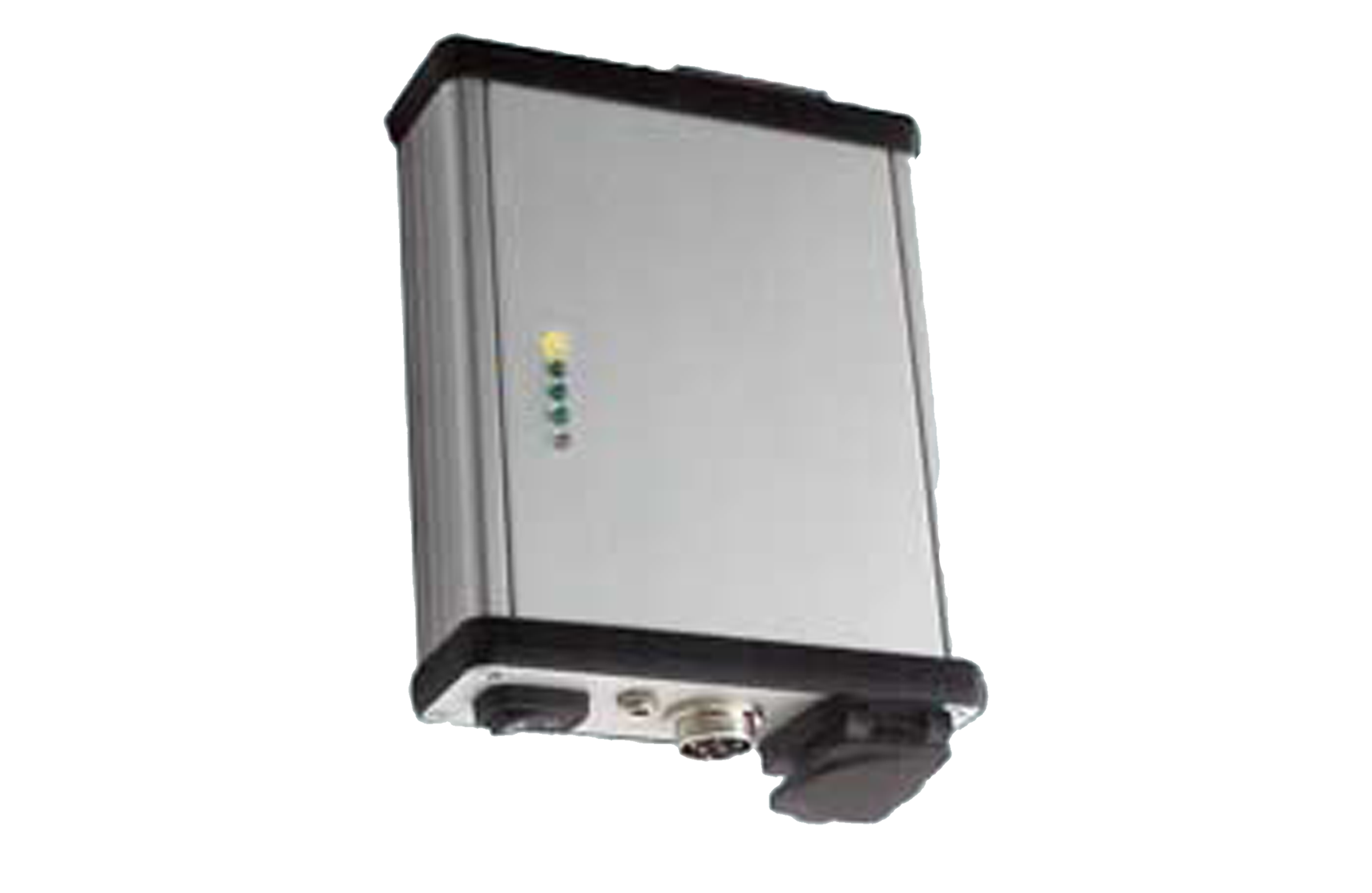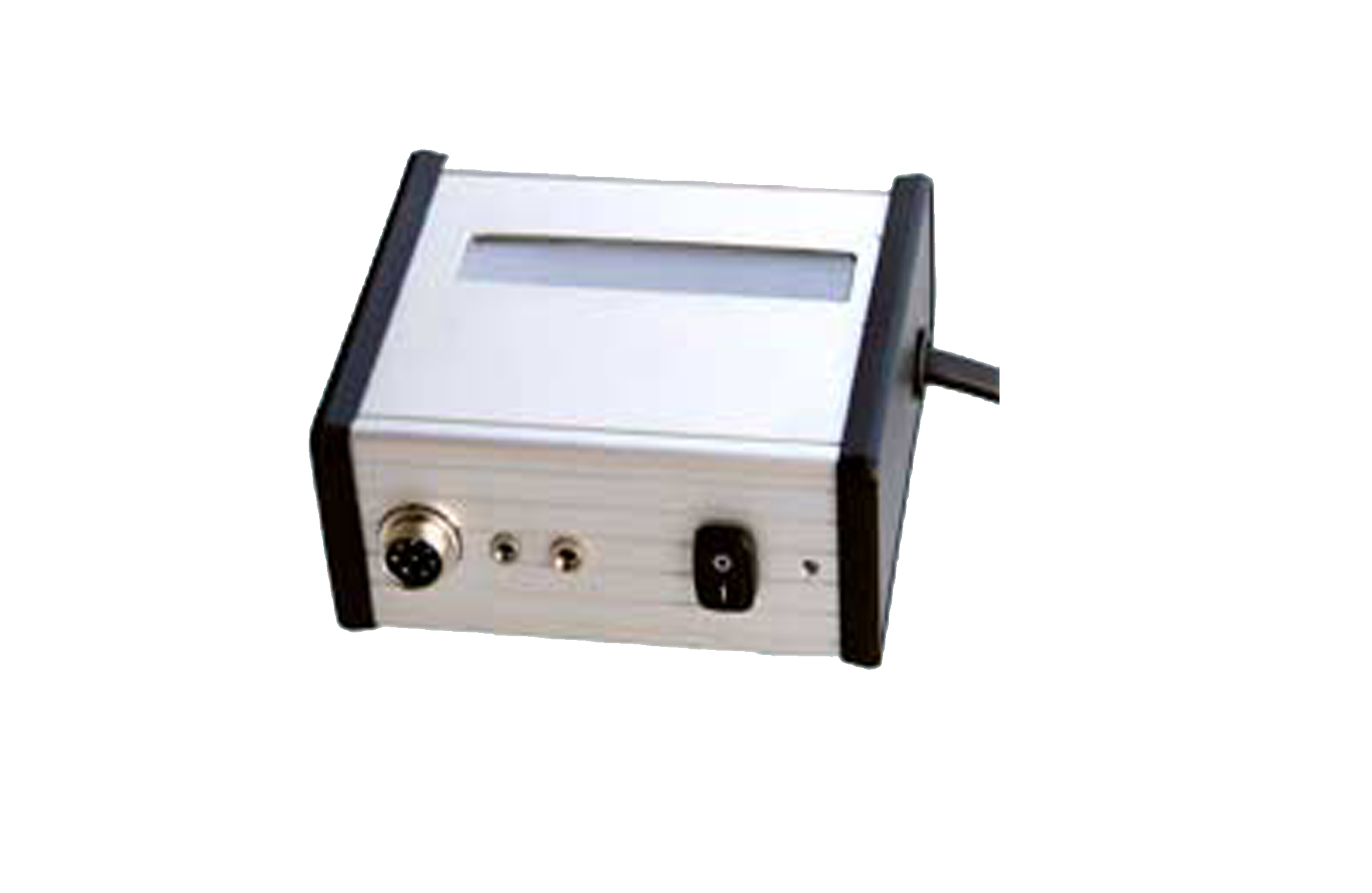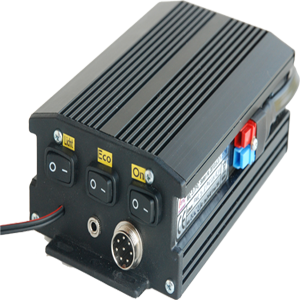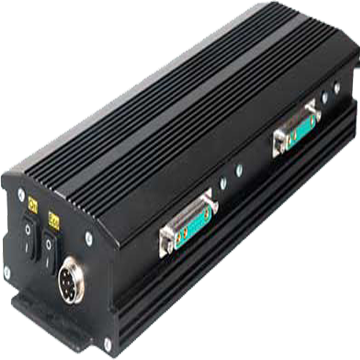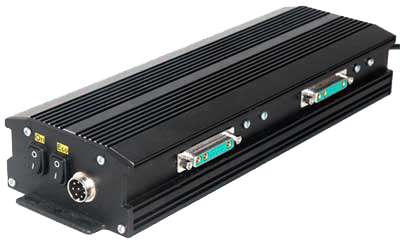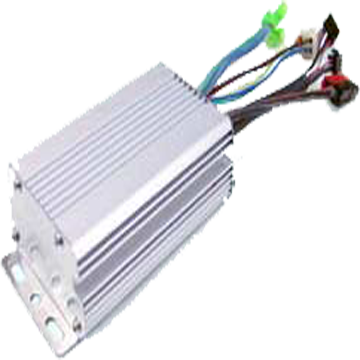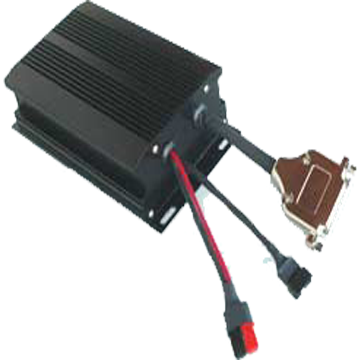MC
ENGINE CONTROLLER
The 'brain' for the engine provides the correct energy conditioning and control. Since the motor has no sliding contacts, electronics must take over this. In this way, a very effective power control is achieved, losses are minimized and the performance of the battery is optimally utilized. You will also find other devices for energy and battery management here
Convenient controller MC-3.4 for BLDC motors up to 350W in the voltage range (battery) 24-48V
All switches are electronic. The battery display is an energy meter, not a simple voltage display, which reliably shows the remaining charge in the battery and also protects it from excessive discharge. In the event of a longer standstill, the power is switched off so that the battery is not discharged if the device is forgotten to be switched off. When the charger is connected, the engine electronics switch off automatically, preventing trouble if you forget to pull the plug. The motor can be controlled either sine (very quiet) or block (slightly more power) commutated. The operating data for motor, wheel diameter, starting and maximum speed, battery monitoring and operating mode are programmed at the customer's request or can be programmed with an adapter cable. This could also be used to import software updates. Special requirements can be realized by arrangement. The controller is only suitable for motors with Hall sensors. Dimensions: anodised aluminum housing 100x125x35 mm, splash-proof
STANDARD FEATURES
Charge counter for measuring the battery charge (LED chain, variant 'L' without display) Battery protection circuit against deep discharge Connection for pedal sensor with to control the pedaling movement Full motor power is available for starting and up to 6 km/h, for higher speeds you have to pedal. The motor power is not regulated via the pedal but via a 'gas' handle Motor power is regulated at 25km/h (according to legal regulations in Germany) Maximum current limit (17A other values possible on request) Recirculation of the energy generated during dynamo operation into the battery ( if, for example, there is enough available when driving downhill) harging socket (not for NiMh batteries) Programming the parameters (wheel diameter, switching speeds, etc.) via a serial interface [possible with an additional adapter cable on any computer with a terminal program without special software] Probe
MC 3.7 TRON
The MC 3.7 version is designed for currents of 35A.
The current limit can be switched down to 17A using a switch.
The other properties correspond to the MC 3.4 control.
A version with a display is not possible due to the housing.
Motor controller DMC-6.4-TRON for controlling 2 BLDC motors up to 1kW each for the voltage range (battery) 24-48V
The motors are controlled in opposite directions so that a vehicle with 2 driven wheels can be realized. All switches are electronic. A speed limit is provided for reverse operation. Adjustable braking operation with feedback is possible. It is possible to limit the speed to a maximum (on request, this is fixed). The standard software of the controller can be programmed within certain limits at the customer's request. Dimensions: anodised aluminum housing 100x125x45 mm, splash-proof
STANDARD FEATURES
Measurement of operating current (both directions), motor voltage and operating voltage,
battery protection circuit against deep discharge ,
measurement of battery charge with energy meter and deep discharge protection,
electronic switch, battery protection circuit against deep discharge, reverse
polarity protection, voltage proof up to 80V (optionally 100V), maximum current of 35A each, switchable to 17A,
control inputs for speed, brake and direction.
The energy generated during dynamo and braking operation is fed back into the battery.
Optional - charging socket with switching input to switch off the engine when charging can be connected.
SPECIAL AND ADDITIONAL FUNCTIONS
switch on via key switch
external display of the battery charge
adjustable electronic motor brake
speedometer connection (for common existing bicycle speedometers) or built-on speedometer (Sigma BC1200)
Motor controller DMC-2.0-TRON for controlling 1 BLDC motors up to 250W each for the voltage range (battery) 24-48V
A maximum current limit of 15A is included. The control is block commutated. It is controlled either with a handle, potentiometer or via a control voltage of up to 5V. A switching input can be used to switch off the motor or be provided with a pedal sensor (for bicycle motor applications). This acts as a switch here; when you step on it, the motor switches on. If you stop it, the motor switches off after 3 seconds. Dimensions: anodised aluminum housing 100x125x45 mm, splash-proof.
SPECIAL AND ADDITIONAL FUNCTIONS
switch on via key switch
external display of the battery charge
adjustable electronic motor brake
speedometer connection (for common existing bicycle speedometers) or built-on speedometer (Sigma BC1200)
Motor controller KLS7230H-300A-TRON-72V for control
Motor Controller KLS7230H-300 A-TRON-72V Sine Wave Controller For 2000W-4000W Brushless DC motor. This motor controller is designed for high voltage and high current DC motors, ideal for sensorless or sensorless control of electric motorcycle or electric car.
SPECIAL AND ADDITIONAL FUNCTIONS
Advanced error detection and protection. Customers can also read the error code in PC software or Android tablet.
Battery voltage monitoring. If the battery voltage is too high, the trip will be interrupted and the motor drive power will be gradually reduced as the battery voltage drops until it fails completely at the preset setting "Low battery voltage".
Built-in current loop and over-current protection.
Configurable motor temperature protection range.
Low temperature and high temperature current reduction to protect battery and controller. The current starts to decrease at 90 °C and cuts off at 100 °C.
The controller monitors the battery charge voltage during brake braking.
The maximum reverse speed and the forward speed can each be configured separately between 20% and 100%.
A 4-pin male to RS232 port and a Z-TEK USB to RS232 cable allow configuration, programming and software upgrades with the tablet, which must now be based on Android OS. People can do the same things on PC software with a standard USB to RS232 cable instead.
Providing a +5 volt and +12 volt output to power various types of hall sensors.
5 switching inputs that are activated by connecting to 12V. Preset for throttle switch, brake switch, reverse switch, forward switch and boost switch.
3 0-5V analog inputs default set to throttle input, brake analog input and engine temperature input Copy signal from one of the hall sensors.
Configurable gain switch. Activates the maximum power output that can be achieved when the switch is turned on.
The effect is the same as the full throttle position, even if you don't apply the throttle at all.
12V brake switch input uses different port from motor temperature sensor.You can have both brake switch and motor temperature sensor functions at the same time on the latest version.Pin 25 is 12V brake switch input port.Pin1 is motor temperature sensor input port.
Optional joystick throttle. A two balanced 0-5V signal for forward and reverse.
(16) Configurable motor over temperature detection and protection with recommended KTY84-130/150 or KTY83-122 thermistor.
